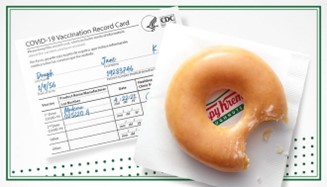Brand owners have to make difficult choices on many things; where and how their products and services are distributed, how they communicate, what media platforms to choose, which creative vehicles to use (celebrities, influencers, music, etc), what kind of events to be associated with, how they use data and AI (Artificial Intelligence)... the list goes on.
And brands can choose to take more (or less) of an activist stance as part of their positioning, like Patagonia does on environmental and climate matters.
Many of these crucial decisions marketers make can impact brand success, but they are also fraught with risk, as consumers also have opinions and share thoughts on social media channels that may go viral at lightning speed.
• The Nike ad for their 30th anniversary of the “Just do it” campaign featured Colin Kaepernick (much maligned after taking the knee during NFL matches). It was deliberate and calculated; Nike has been pushing purpose for years in an authentic and conscious way.
• When Dylan Mulvaney, the transgender TikTok influencer, promoted Bud Light in a social media post, it generated an immediate backlash, and resulted in much media speculation about the impact on the brand.
• In a bid to use gender-inclusive models, Adidas caused a controversy in a recent campaign for women’s swimwear, featuring two masculine-presenting models for a special edition Pride swimsuit. The reaction was divisive.
• In the United States, activist groups in Georgia pressured local corporations including Delta Airlines and Coca-Cola to take a stand against a proposed law that was seen to restrict voting by minority groups.
Storm in a teacup or a long-term hurricane damage?
How does taking a stand affect brands in the long term? Is all publicity good publicity? Well, it depends.
• First you need to ensure that your stance is consistent with your brand’s DNA. It needs to be everyday behaviour, not a one-off. And it is vital that you get Diversity and Inclusion right – see our I&D Playbook for data-supported guidance. Kantar research in North America shows that two-thirds of Americans (66%) feel advertisers have a responsibility to give visibility in their content for LGBTQ+ individuals, couples, families, and communities. ‘Just’ showing under-represented groups in ads has no impact on brand equity or short-term sales. It is how you do it that matters. Showing under-represented groups in a positive way has much greater impact on both longer-term brand building and short-term sales.
• Second, brands have many opportunities to promote themselves, so reducing risk by not over-investing in one person or opportunity is best. In a majority of cases, any reputational damage from this sort of activity is short-lived and can seem much worse than it will be once the noise has died down. Take Nike for example: the media carried on about a share price decline in September 2018 after the furore around their Colin Kaepernick campaign. The decline was less than 10% - from $80 to $73 per share – but four months later it was well above $80 again.
• Third, in the case of any brand controversy, it’s key to take decisive action as soon as possible, to prevent further fuelling of social media. Consider which course of action is merited:
1) Stand your ground, mildly and logically (see Krispy Kreme case study below)
2) Explain situations that are not clear-cut if you have all the necessary information. You can’t please everyone so staying authentic to your brand is key.
3) Take a step back – take responsibility and apologise if needed but distance your brand from the situation or creative vehicle.
In all cases, brands must have the right crisis management processes in place. Make sure your organisation is well connected, use an appropriate spokesperson, and deliver an early, simple, and unemotional statement.

Case study: Krispy Kreme
During the Covid-19 pandemic in the USA, Krispy Kreme offered a free doughnut to anyone showing up to their stores with a vaccination card. Some negative comments followed on social media, but CEO Mike Tattersfield said, “We’re a sweet treat company… if folks don’t want to visit a doughnut shop, they don’t have to.” He added “…folks that want to get a vaccine, if they decide to combine a Krispy Kreme pickup (for) a doughnut, they can. That’s how we look at it… generosity.” This promotion was the first major brand taking a stand in support of vaccination and fitted perfectly with the brand’s DNA. It demonstrates the benefits of being brave, consistent, and authentic.
What should brands do?
Be ready: Brands need to understand the risks, take them in a calculated way, and be aware of the implications in advance. This can be done via a combination of ad / content pre-testing with Link AI or LINK+, Dx analytics to ensure that sentiment and trends are monitored in-flight, and AI-enriched signals from Kantar BrandDynamics for a daily pulse on your brand at all times, especially during a crisis.






